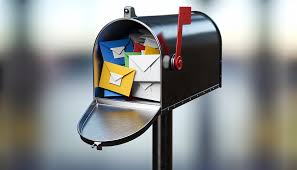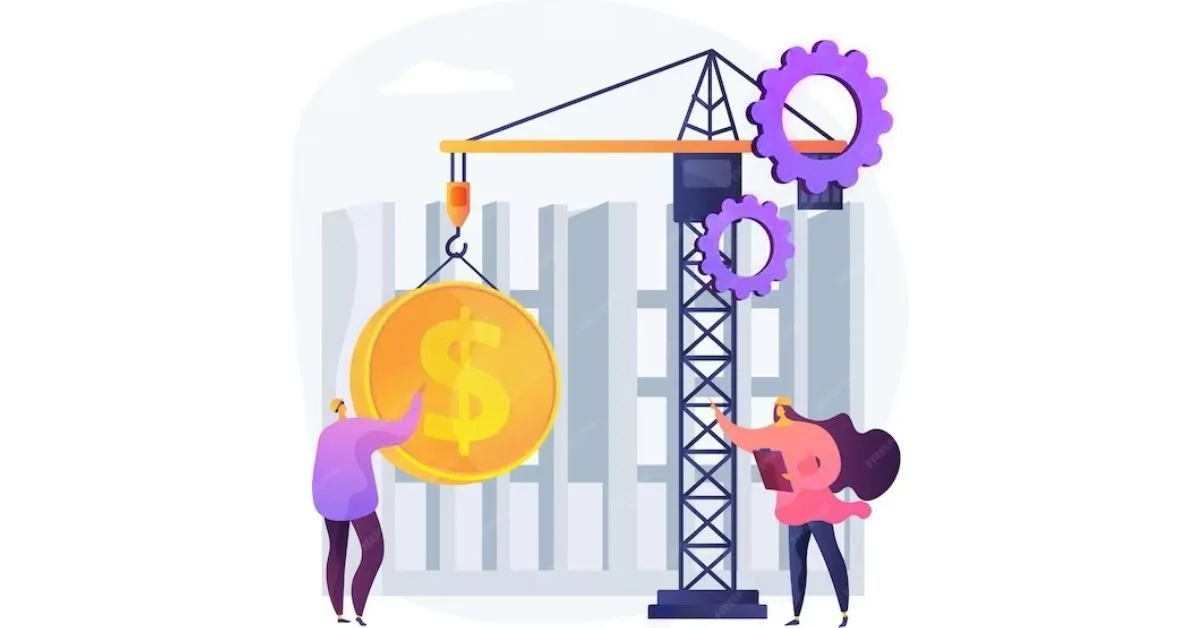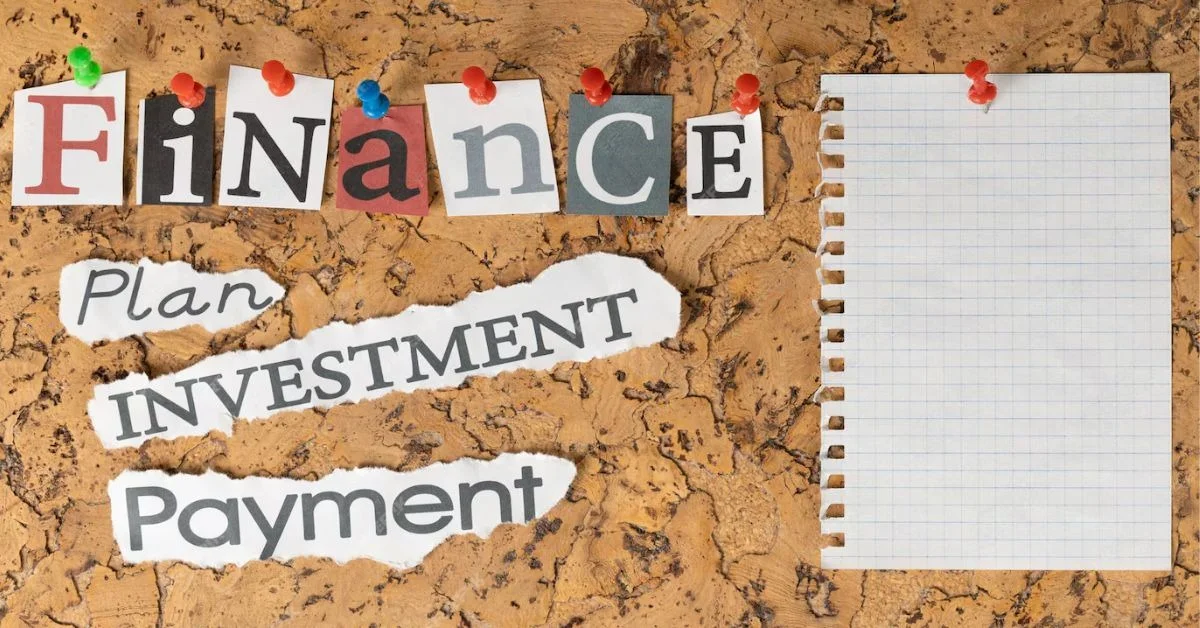BUSINESS
10 Effective Strategies for Managing Hard Bounces and Spam Complaints

Managing hard bounces and spam complaints is very important for the good health of your email marketing strategy. If your emails land straight into the Gmail spam folder, your sender reputation will go down the drain, and obtaining good results for your campaigns becomes a very hard task. Such issues can be experienced by some whose businesses are heavily reliant on email communication. Below, learn 10 great ways to manage hard bounces and decrease spam complaints, ensuring your emails reach the inbox.
1. Understand Hard Bounces
A hard bounce can be regarded as the inability of an email to reach the destination, based on specific permanent reasons—most often, an invalid email address. A hard bounce is, therefore, more severe compared to a soft bounce, which implies temporal issues like full inbox and server problems. Hard bounces have a negative effect on your sender reputation. ESPs monitor your bounce rate, and too many hard bounces can cause your emails to be flagged as spam or, even worse, your account can be blacklisted.
2. Clean Your Email List Regularly
The best approach to containing hard bounces is maintaining a clean list. Regular cleaning of the list from invalid or out-of-date email addresses will reduce hard bounces to your system. Tools like email verification can effectively check the validity of an email added to your list. You can also segment out inactive subscribers that have not engaged in your emails within the last 6-12 months to either re-engage with them or to remove them to keep your database updated, therefore reducing the bounce rate.
3. Set a Double-Opt-In Process
A double opt-in process guarantees that the email addresses collected are legit and from people interested in what you are offering them in your emails. That means a subscriber is asked to click on a link that came into their inbox to confirm their email address.
- Reduces Hard Bounces: Of course, through confirmation, any chance of making it into your list with fake or mistyped emails is completely ruled out.
- Improvises engagement: The double-opt-in process makes the subscribers more interested in what you have to say, so they will like to engage with it, and the possibilities of the emails going to spam in Gmail decrease.
4. Monitor and Analyze Bounce Rates
Track the bounce rates and soon you will realize the trends or issues that might be cropping up, in order to rectify the same well in advance of the situation having an impact on your sender reputation. Tracking overall bounce rates, hard bounce rates, and soft bounce rates of emails allow corrections to be made before any surge in bounce rates eliminates emails from the inbox.
5. Address Spam Complaints Proactively
Spam complaints are the instances where the recipients of your mail mark your email as spam. Such complaints are potentially problematic towards your sender’s reputation and potentially could bring the threshold higher towards your email delivery into spam in Gmail. Handling spam complaints quickly and effectively is critical. Minimize complaints by ensuring that people can easily Unsubscribe from your emails. This curtails the irritation of receivers that do not want to receive your emails but they don’t want to report your messages as spam. Also make sure that your email messages are relevant to what your subscriber is interested in and their choices on how often they would like to hear from you.
6. Use a Reputable Email Service Provider (ESP)
A good ESP is thus important in handling hard bounces and spam complaints. A good ESP should avail the tools and resources that allow one to keep a healthy list of emails and track their deliverability.
Bounce Management
An ESP that should automatically manage bounces by removing from your list the hard-bounced addresses.
Spam Complaint Handling
An ESP with the following tools: Monitor and reduce spam complaints.
Deliverability Support
A good ESP should have good deliverability in their reputation to ascertain that your emails land in the inbox.
7. Educate Your Subscribers
This is as far as one can go in helping reduce spam complaints—to let your subscribers understand your email practices. Let them be aware of what they are getting themselves into in terms of content and frequency at the point of sign-up. Always send a welcome email that outlines what type of content one shall receive and how frequent these shall be. Including content previews serves to set expectations, while offering frequency options tells subscribers how often they want to receive mail from you. This approach builds goodwill and reduces the chance that listeners will mark your messages as spam.
8. Segment Your Audience
Segmentation is emailing the respective group in your subscriber list according to interest, behavior, or other such demographic data. This content can be easily tailored to the needs of each segment, it can stop hard bouncing and spam complaints.
- Interest-Based Segmentation: Segment subscribers based on their interests or how they have reacted to your email content previously.
- Engagement-Based Segmentation: Treat your highly engaged prospects differently than the less involved ones.
- Demographic Segmentation: Send targeted emails based on the age of the respondent, their location, or purchase history.
9. Conduct Re-Engagement Campaigns
This is that kind of campaign which helps you retrieve those unresponsive subscribers for whom you are sending a number of targeted messages so that they may re-engage you or you can remove them from the list, courtesy of reducing hard bounces and spam complaints. Start by identifying inactive subscribers using your ESP, and then send them a re-engagement email. Maybe throw them an incentive: a discount or some special exclusive content that they may like to have. If nothing at all works, then get them out of the list and save the health of your list and, in turn, save your bounce rates.
10. Review and Update the Content Regularly
It is consequently also very important that you should consider reviewing and updating your content to use the email list healthily. The irrelevance that is caused by the obsolete content will be the cause of disengagement, hard bounces, or even spam complaints. Be sure to A/B test different subject lines, content, and calls to action to be well informed about what will resonate best with your target audience. Provide feedback to the subscribers and work on them to improve future emails. This will keep your messaging current, making it relevant and engaging, thereby reducing the chance of your emails going to spam in Gmail.
The Bottom Line
Manage hard bounces and spam complaints properly, as these factors ensure that your emails are actually delivered to the inbox, not the spam folder. Combining the above strategies now allows for superior deliverability rates, a safe sender reputation, and, eventually, better results for email marketing campaigns since this issue is being experienced by some SEO specialist for example, those focusing on email marketing. But first, given that such a proactive approach is made towards list management and relevance in content, we keep away from having our emails filtered to that mortal spam folder and instead get them right in front of our audience.
BUSINESS
Tips for Choosing the Right Yard Waste Dumpster Rental

When it comes to managing yard waste, having the right dumpster rental can make a world of difference. Whether you’re tackling a landscaping project or simply cleaning up your outdoor space, having a convenient and efficient way to dispose of yard waste is essential.
With numerous options available, it’s important to know what to look for when choosing a yard waste dumpster rental.
Here are some valuable tips to help you make the right decision.
Assess Your Needs
Before you dive into searching for a yard waste dumpster rental, pause for a second to think about what you need. Think about how much yard waste you think you’ll end up with and the size of the stuff you’re tossing out. This will give you a good idea of what size dumpster you should go for. Rental services usually have different sizes to choose from, so knowing your needs will make picking one a breeze.
Research Local Providers
Before selecting a yard waste dumpster rental, it’s crucial to research local providers thoroughly. Explore this dumpster rental service in Delaware for insights on what to consider when choosing a rental company near you. Delve into reviews, compare pricing, and evaluate services provided. Ensuring you secure the most advantageous deal available while upholding quality is paramount.
Consider Sustainability
Going green is not only good for the environment, but it can also save you money on your rental. When searching for a yard waste dumpster rental, consider asking if they have environmental considerations in their waste management process or if they recycle the waste they collect. This will not only reduce your carbon footprint but may also result in lower fees.
Consider Pricing and Terms
When you’re checking out various yard waste dumpster rental choices, make sure to think about the pricing and terms. Look for clear pricing options with no sneaky fees, and ask about any extra charges for delivery, pickup, or going over weight limits.
Also, keep an eye on how long you can rent it and any rules about what kind of yard waste you can toss in. Knowing the ins and outs of the rental deal will help you dodge surprises and make sure your rental goes without a hitch.
Choose the Right Size
Choosing the perfect dumpster size is key for handling yard waste like a pro. If it’s too small, you’ll end up with overflow and extra charges; too big, you’re overspending. Think about how much waste you’ll have and pick a dumpster size that’s just right. Rental services usually have various options, so you can find the one that suits your needs best.
Prioritize Sustainability
When you’re renting a yard waste dumpster, think about going green. Check out dumpster rental services that give eco-friendly disposal choices like composting or recycling yard waste whenever they can. By picking a provider that cares about sustainability, you’re not just getting rid of waste, you’re helping out the planet too.
Making the Right Yard Waste Dumpster Rental Choice
Picking the perfect yard waste dumpster rental is a must for handling outdoor projects and keeping your outdoor area neat. By figuring out what you need, checking out local options, thinking about costs and terms, finding the right size, and focusing on sustainability, you can make sure renting goes smoothly.
Whether you’re sprucing up your yard or doing some landscaping, choosing the best dumpster rental service in your area will help you manage your yard waste well and in an eco-friendly way.
Share this article and other related content with your fellow readers as you continue exploring the articles on this site.
FINANCE
The Benefits of Utilizing Expert Tax Services for Managing Your 529 Plan

Navigating the complexities of a 529 Plan can feel overwhelming. Especially when considering tax implications. That’s where expert tax services come into play.
But what makes a tax accountant invaluable in this scenario? They bring clarity to intricate tax laws and regulations. By doing so, they ensure you’re compliant and maximizing your savings.
Their guidance becomes a beacon, illuminating the path to financial efficiency. In managing your 529 Plan, the expertise of a tax accountant is indispensable. They turn a daunting task into a manageable and strategic financial decision.
Understanding the Tax Benefits of a 529 Plan
529 plan is a type of savings plan that allows you to invest funds for future education expenses without incurring federal taxes on earnings or withdrawals. Many states offer additional tax incentives for contributing to a 529 Plan.
These can include deductions or credits on state income taxes. It makes it an even more attractive option for families saving for education expenses. Yet, it’s crucial to understand the specific tax benefits of your state’s plan.
It is where expert tax services come in. They have an in-depth understanding of state-specific tax laws and regulations. They take advantage of all available tax benefits.
The Expertise of Tax Accountants in Maximizing Savings
One of the benefits of utilizing expert tax services for your 529 education savings plans is their ability to maximize your savings. Tax accountants have a deep understanding of tax laws and regulations, including those specific to 529 Plans. They can help you navigate the complex tax implications of your contributions, earnings, and withdrawals from the plan.
This knowledge allows them to identify opportunities for tax savings. It ensures that you are compliant with all tax laws related to 529 education savings plans.
By leveraging their expertise, you can make informed decisions. It optimizes your financial benefits and secures your future educational savings.
Strategic Planning for Your 529 Plan
An expert tax service can help you develop a strategic plan for your 529 Plan. They can analyze your financial situation and determine the most helpful ways to contribute, invest, and withdraw funds from the plan.
Tax accountants can also guide how to coordinate 529 Plan contributions with other education-related tax benefits. These includes the following:
- American Opportunity Tax Credit
- Lifetime Learning Credit
Peace of Mind and Ongoing Support
Managing a 529 Plan can be a time-consuming and complex task. By utilizing expert tax services, you can have peace of mind knowing that your plan is being managed efficiently and effectively.
Tax accountants can also provide ongoing support and guidance as your financial situation changes or as new tax laws are implemented. It allows you to focus on other important aspects of your life while still ensuring that your 529 Plan is being managed in the most beneficial way possible.
Discovering the Benefits of Expert Tax Services
Expert tax services make 529 Plans manageable. They decode complex tax issues, revealing paths to savings. Their insight ensures compliance and optimizes your investment.
Affordable tax service transforms daunting tasks into strategic success. It’s about maximizing benefits while minimizing stress. Choose expert tax services for peace of mind.
They safeguard your educational savings, ensuring future success. Remember, investing in expert advice pays dividends in financial health.
Did you find this article helpful? If so, check out the rest of our site for more informative content.
REAL ESTATE
The Cost of Inflation in Construction

Since 2022 inflation has been driving up costs for just about everything, from bread to gasoline to construction costs and manufacturing. At just about every level, cost increases from 10 to 200 percent have been realized, sometimes adding three to four layers onto the original cost from the producer before reaching the final end user or customer. Construction in particular has been significantly hammered by inflation in multiple areas, depending on so many different supplies, skills, trades and products to complete a project. That cost increase ultimately has to get passed on to the commercial or industrial customer who may not be so willing to take on such increases if they can be delayed until the market is more reasonable.
How Can it Be Fixed?
The primary tool used by the government involves reducing the amount of currency in the market, thereby driving up the value of the dollar and reducing inflation’s effect. While easy to say, the implementation aspect is hard. It means increasing the cost of borrowing, making new money more expensive to obtain. Other methods involve reducing the number of income earners generating new value as well. That in turn results in job loss. The list goes on with a singular, common feature – pain. Most solutions for inflation tend to cause more loss, which is why inflation is often feared as a double-damage effect on an economy.
What Can Construction Do as a Solution?
One method of fighting inflation in the construction industry involves finding lower-cost substitutes for supplies and services used. However, this is a bit of a limited option; going too low ends up lowering the quality of the goods or services provided. Since the construction company is ultimately liable for the quality of the entire project delivery, there is a practical floor to how low quality can go before a discounted price isn’t worth taking. After all, the old saying of, “You get what you pay for,” really does apply in construction.
A second method involves financing the inflation as a delay tactic. The thinking here is to let someone else’s money take the hit of inflation through borrowing and, when times are better and currency valuation rises, the financing can be paid off with a lower cost. It is, in essence, gambling that the future will provide a better exchange for the borrower than the cost of the borrowing today. In many cases, this kind of financing out of inflation doesn’t work, and the cost of the construction ends up being far more.
A third method involves maximizing local resources, labor and equipment. While some construction companies insist on bringing all of their resources, cost-sensitive operations focus on finding the resources locally wherever the project happens to be. Again, there is a bit of gambling here; if the resources are not available locally, the company will still have to bring them in to complete the job. At short notice, that could drive the cost higher than if the elements were retained to begin with well in advance.
The Most Sensitive Construction Areas Hit
Among the areas hardest hit, raw material suppliers and equipment fleet managers have been seeing the most noticeable ongoing expense impacts. Fuel for vehicles erodes operating budgets mercilessly. Where construction involves a lot of transport, fuel costs are going to remain a challenge.
Most construction requires raw materials for assembly and end product development. As raw materials go up, the cost of the project increases notably. Materials can reach as much as 60 percent of a construction project’s overall expense, so controlling procurement is essential to protect profit margins. Yet again, the quality issue ties the project’s hands from going too cheap on supplies.
Finally, labor will continue to be a pressure during periods where hiring is difficult. Combined with inflation, deficits in skilled labor and trades can easily drive up salary and wage costs on a project, even with outsourcing and contracting versus direct hires.
Inflation Doesn’t Last Forever, Right?
Much of the expectation in the U.S. is that the current inflation levels will be temporary. However, Japan was a good example where long-lasting economic problems hampered multiple industries for a decade or longer. There’s no rule that says inflation can only last one or two years. Instead, monetary policy tends to be the primary response that makes a difference, reducing supply of currency and increasing economic buying power.

 ENTERTAINMENT4 days ago
ENTERTAINMENT4 days agoExploring the Kristen Archives: A Treasure Trove of Erotica and More

 ENTERTAINMENT1 day ago
ENTERTAINMENT1 day agoKiss KH: The Streaming Platform Redefining Digital Engagement and Cultural Currents

 EDUCATION1 day ago
EDUCATION1 day agoLingrohub Platform: A Complete Student Access Guide

 LIFESTYLE4 months ago
LIFESTYLE4 months agoThe Disciplinary Wives Club: Spanking for Love, Not Punishment

 TECHNOLOGY4 months ago
TECHNOLOGY4 months agoBlog Arcy Art: Where Architecture Meets Art

 TECHNOLOGY1 day ago
TECHNOLOGY1 day agoCasibom: The Digital Alchemy Reshaping Systems, Society, and Self

 TECHNOLOGY24 hours ago
TECHNOLOGY24 hours agoSecuring Your Online Presence: The Ultimate Guide to Buying an SSL Certificate

 BUSINESS24 hours ago
BUSINESS24 hours agoDiversifying Your Portfolio: The Key to Successful Investing in Portland, Oregon












